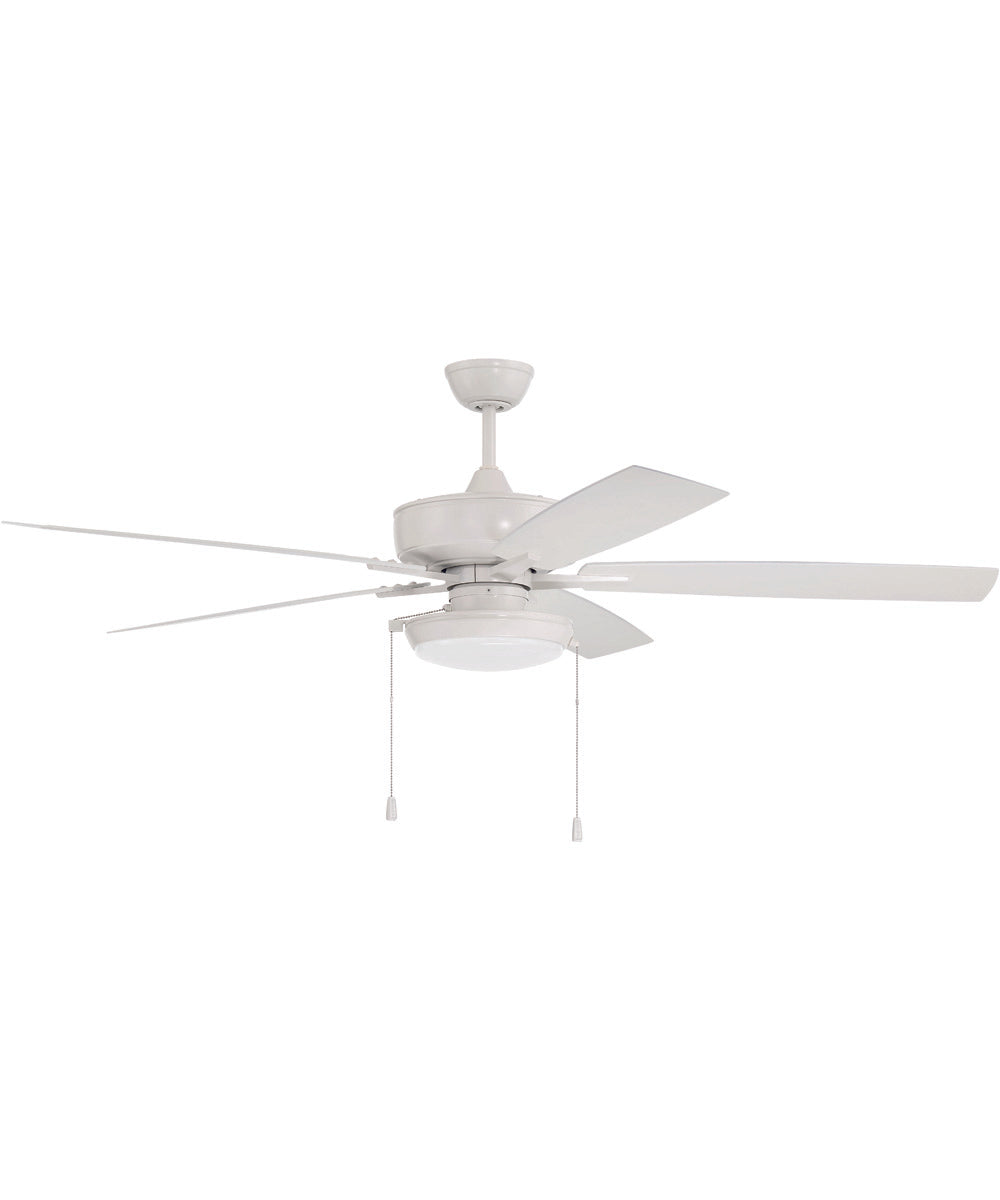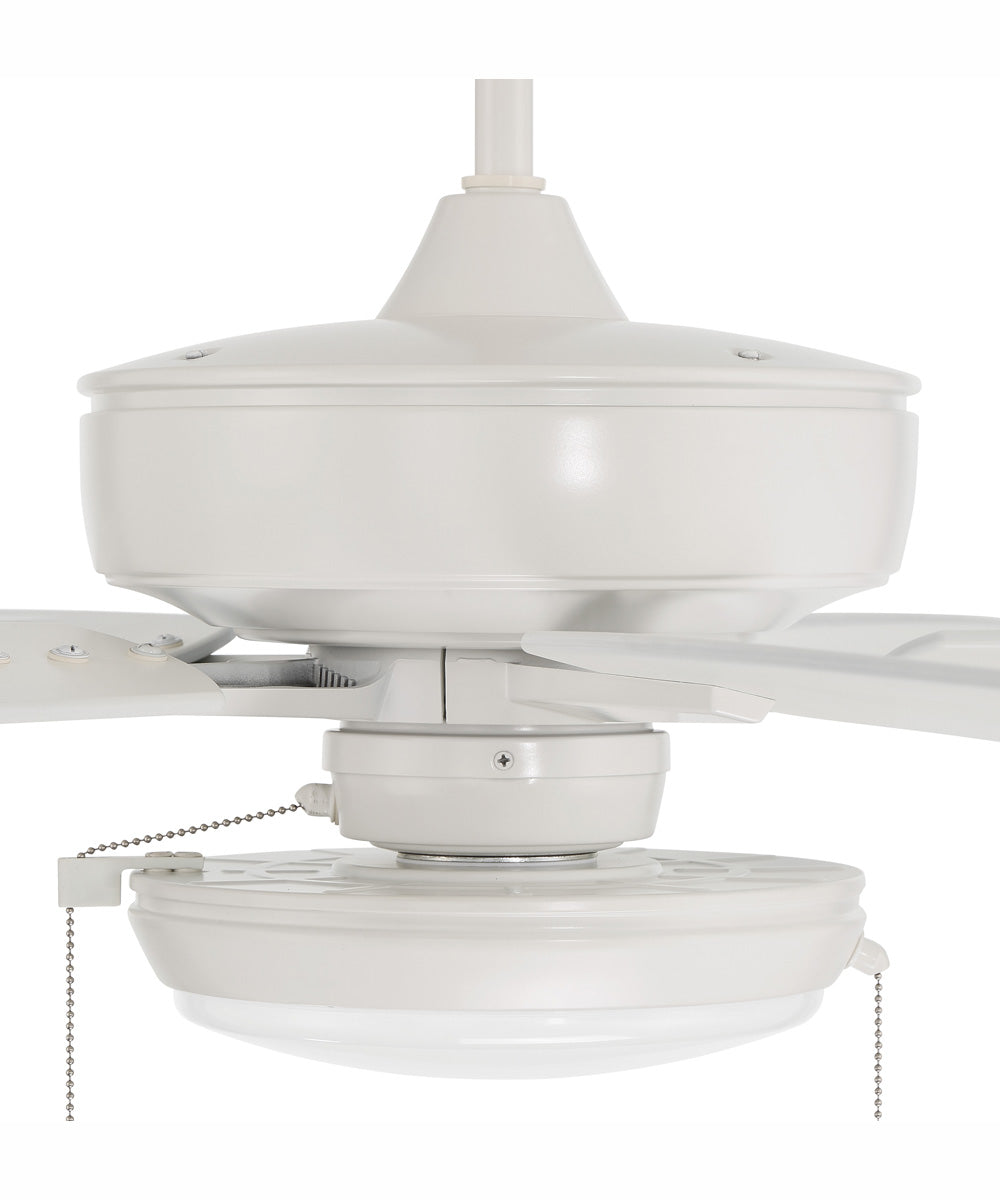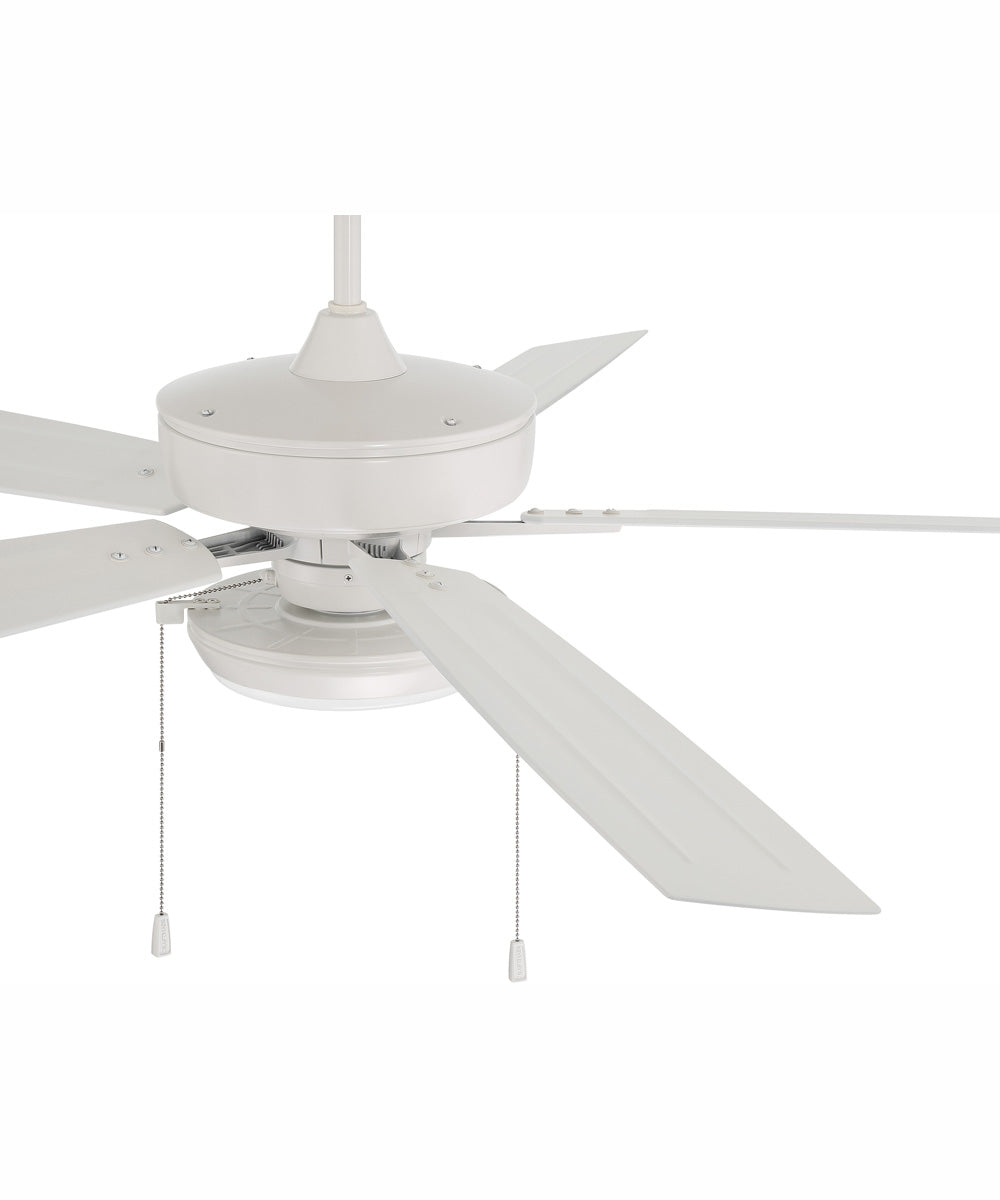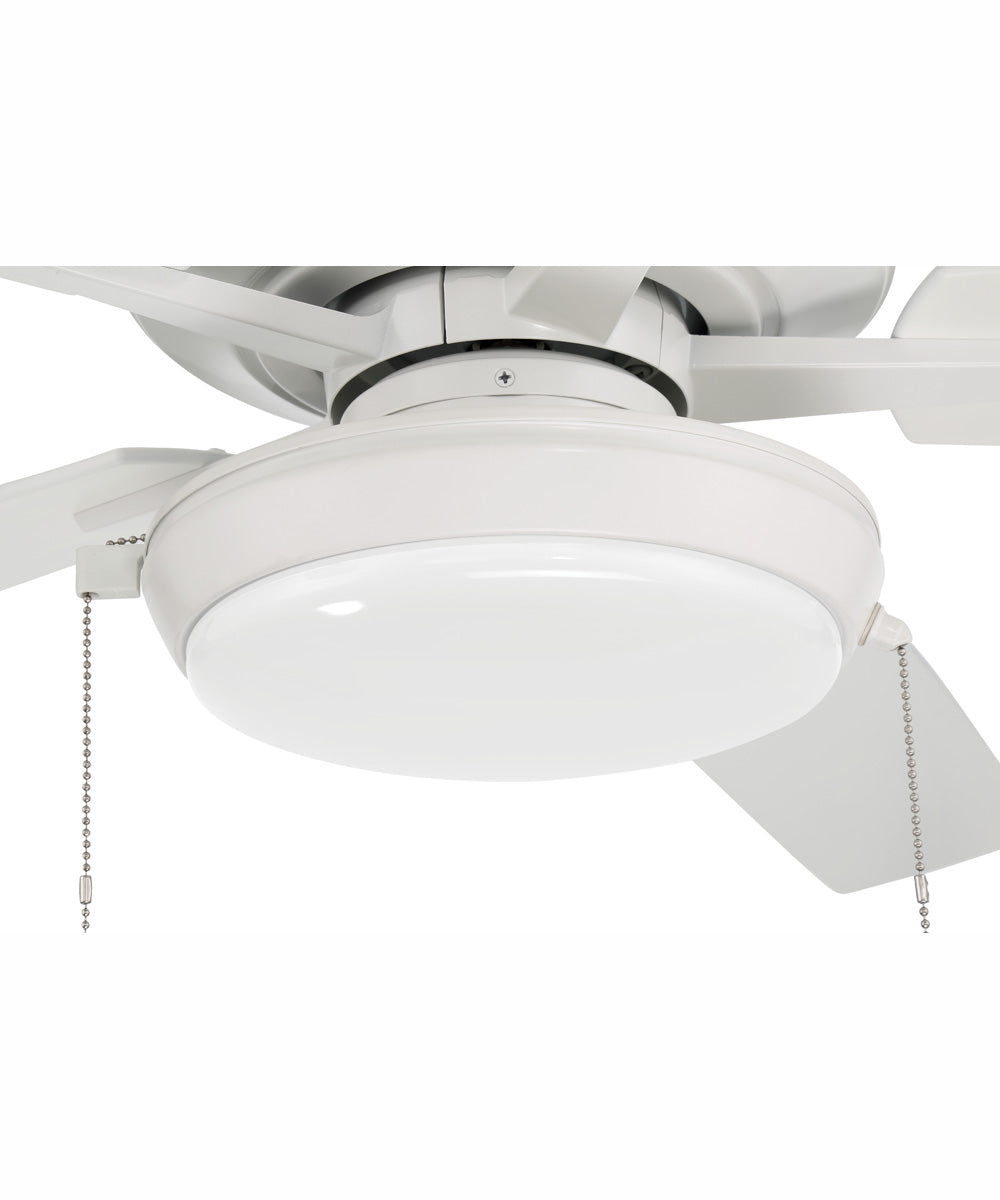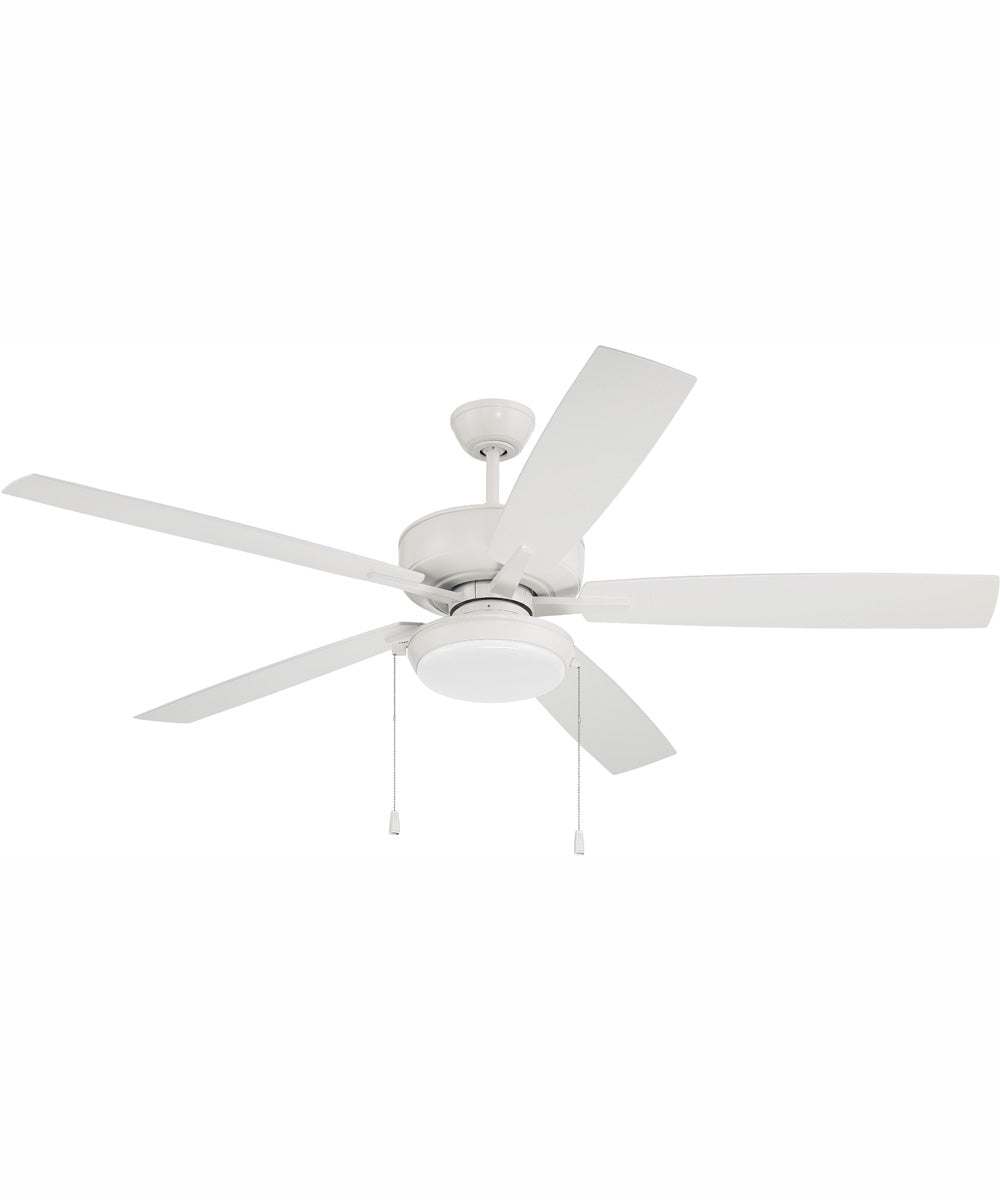Craftmade 60" Outdoor Super Pro 119 1-Light Indoor/Outdoor Ceiling Fan White
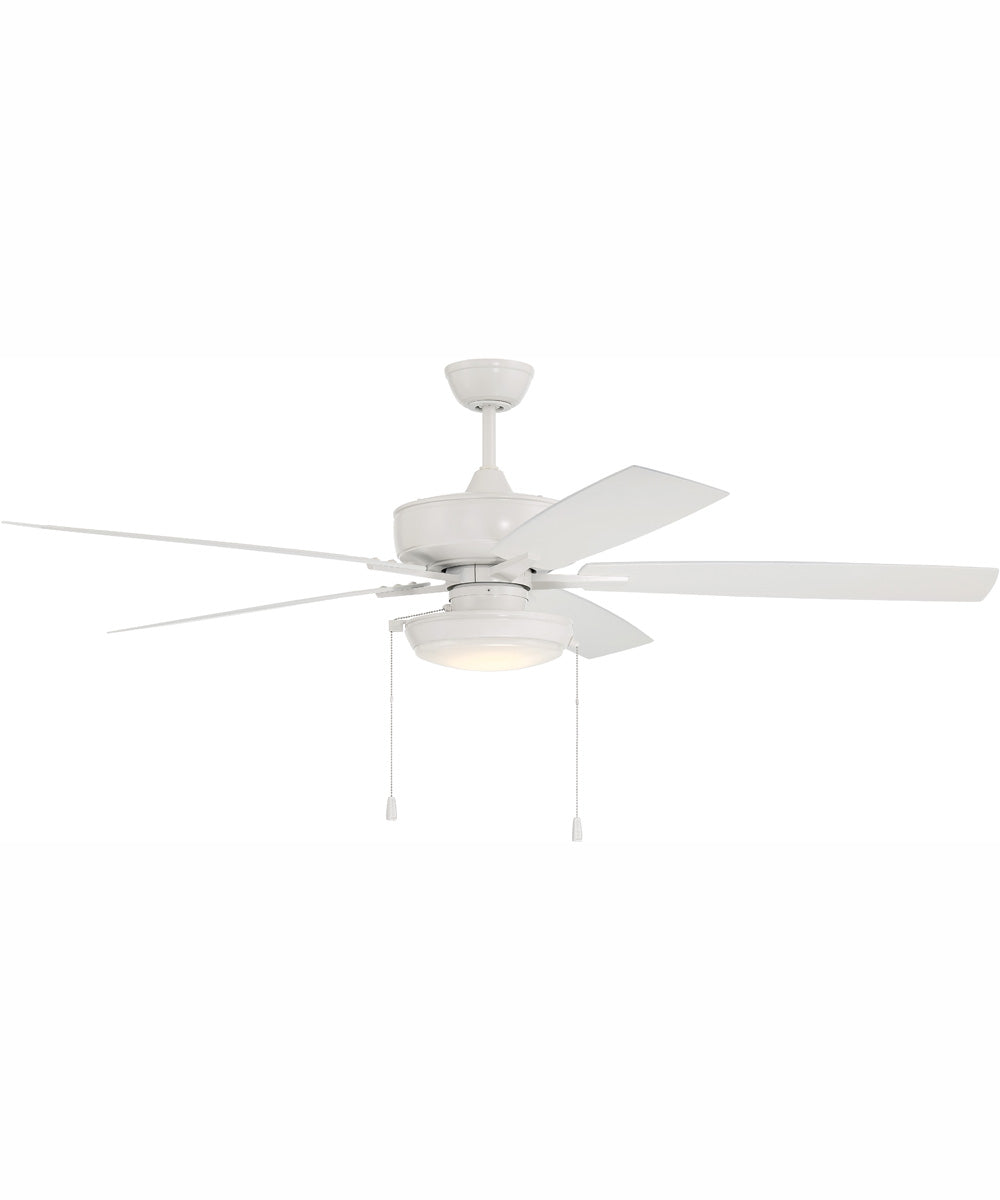
60" Outdoor Super Pro 119 1-Light Indoor/Outdoor Ceiling Fan White
The ideal combination of excellent performance, exceptional value and timeless style, the wet rated Craftmade Outdoor Super Pro 60" ceiling fan with optional 18W dimmable LED pan light (included) featuring a clean motor, updated canopy and straight blade arms is built for performance. The dual mount, heavy-duty, 3-speed, reversible fan with custom 60" ABS blades deliver superior airflow for years to come.- White Finish
- Shade Finish: Frost White Glass
- Made with Aluminum, Acrylic, ABS, Silicon, Steel, Copper
- 16.29" Height x 60" Width
- 1 x 18 Watt 120/60V 100mm bulb (included)
- 1071 Lumens, 90 CRI
- Includes 5 blades
- Blades Span 60 inches
- Blades Pitch is 12 degrees
- Reversible two-sided blades
- Motor Speed: 3
- Light Kit Included
- Control Option: Pull Chain
- Mount Method: Dual Mount (Flat or Angled Ceiling)
- UL Listed: Wet Location
- CA Title 24 Compliant
- Part of the Outdoor Super Pro 119 Collection by Craftmade
- Weight: 25.57 lbs
Product Overview
The 60" Outdoor Super Pro 119 1-Light Indoor/Outdoor Ceiling Fan in White is the epitome of excellent performance, exceptional value, and timeless style. This ceiling fan is designed to deliver superior airflow and lighting, making it a perfect addition to any indoor or outdoor space. Featuring a clean motor, updated canopy, and straight blade arms, this fan is built for performance and durability.
Design and Style
This ceiling fan boasts a sleek and modern design with a pristine white finish that complements any decor. The fan includes five custom 60" ABS blades with a 12-degree pitch, ensuring optimal air circulation. The frost white glass shade adds a touch of elegance while providing a soft, diffused light. Its minimalist design makes it an ideal choice for contemporary, modern, or even traditional room themes.
Features and Benefits
Constructed with high-quality materials such as aluminum, acrylic, ABS, silicon, steel, and copper, this ceiling fan is built to last. It is wet-rated, making it suitable for both indoor and outdoor use, including patios, porches, and sunrooms. The fan features a heavy-duty, 3-speed reversible motor, allowing you to adjust the airflow to your preference. The included 18W dimmable LED pan light provides ample illumination with 1071 lumens and a 90 CRI, ensuring bright and accurate color rendering.
Versatility and Usability
This ceiling fan is designed for versatility and ease of use. It includes a dual mount system, allowing for installation on flat or angled ceilings. The pull chain control option makes it simple to operate, and the reversible two-sided blades offer flexibility in achieving the desired airflow direction. Whether you're looking to cool down during the summer or circulate warm air during the winter, this fan has you covered.
Ideal Locations
The 60" Outdoor Super Pro 119 Ceiling Fan is perfect for a variety of settings. Use it in living rooms, bedrooms, or dining areas to enhance comfort and style. Its wet rating also makes it an excellent choice for outdoor spaces such as covered patios, gazebos, and verandas. The fan's timeless design ensures it blends seamlessly with various room themes, from modern and contemporary to traditional and rustic.
Order Now
Don't miss out on the opportunity to elevate your space with the 60" Outdoor Super Pro 119 1-Light Indoor/Outdoor Ceiling Fan in White. Experience the perfect combination of style, performance, and value. Order now and enjoy superior airflow and lighting for years to come.

What is an Ceiling Fan?
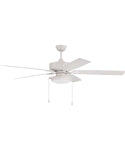 A ceiling fan is a fairly large ceiling-mounted fan which can rotate clockwise or anticlockwise. In one direction the fan blows air downward, while in the other it draws air upwards. Some fans come equipped with a light fixture to double as a central light. The fan is a hardwired fixtures so has to be installed electrically. Typically it is used with a wall switch or remote control. Ceiling fans can help keep you cool in summer and also warmer in winter by circulating the air.
A ceiling fan is a fairly large ceiling-mounted fan which can rotate clockwise or anticlockwise. In one direction the fan blows air downward, while in the other it draws air upwards. Some fans come equipped with a light fixture to double as a central light. The fan is a hardwired fixtures so has to be installed electrically. Typically it is used with a wall switch or remote control. Ceiling fans can help keep you cool in summer and also warmer in winter by circulating the air.
Ceiling Fan Benefits
- Circulates air for healthier breathing.
- Reversible direction for summer/winter.
- Blows air onto bodies for direct cooling.
- Draws hot air upwards for ambient cooling.
- Optional speeds for varying effect.
- May add to lighting (if light is included or addedd).
- Saves on electrical heating bills.
- Keeps rooms fresher and helps remove odors.
- Provides a gentle breeze over a bed or chair.
- Usually can be manually (pull chain) or wall (switch) operated.
- Helps to remove or distribute hot rising air.
Traditional Style
Classic in nature, yet elegant by design best describes the timeless appeal of predictable yet dignified lines and curves. Traditional Style Lighting prides itself on stately structure, beautiful ornate details, and reliable designs that tell a story of enduring appeal and craftsmanship. It’s a tried-and-true style that is reliable, and speaks of discriminating and taste of a steadfast lifestyle.
For which rooms?
A ceiling fan needs enough headroom, so is ideal over some furniture such as a couch, seating area or bed. See hugger fans for maximizing headroom. Fans are most often used in living rooms, family rooms and bedrooms, where people might be dwelling for a longer period of time.
Placement/Layering
A fan is best positioned either centrally in the room or above a main seating or sleeping area. If the fan has a light it can help to light the room. We recommend adding either wall lights or some lamps to fill out the space.
Mounts to the Ceiling
Attaches to a ceiling. The ceiling should be flat, unless the fan supports sloped/vaulted ceilings. A small canopy will conceal the electrical installation.
Installed by an Electrician
An electrician or person with electrical installation knowledge will need to permanently wire the ceiling fan into the building's electrical supply.
Resources
Learn how to choose ceiling fans with our Energy Star lighting
We've shopped for you!
You're getting the the lowest prices, guaranteed!
Thousands of items are on sale every day. Plus you're tax-free unless you live in Wisconsin.
Want a different price? Contact us for a personalized quote.
Safely checkout with our world-class encryption.
Trusted by over 100,000 customers, your private and payment data is secure and will not be shared.
We accept Visa, Mastercard, Discover and Paypal. Credit cards can also be processed through Paypal.
Spend $49.00 to get Free Shipping (contiguous USA).
Most other items ship for $9 in 1-3 business days (contiguous USA). QuickShip items ship out the next business day.
Depending on your location, shipments take on average 3-5 business days or up to 7-10 from coast to coast. We ship from multiple locations.
You will receive tracking numbers by email when your items ship out, via Fedex, UPS or USPS.
You'll be able to track the packages online or on our site.
You can also talk to our team of experts at any time, or Live Chat.
Enjoy 30 days for easy returns. See our return policy for details.
We replace breakages/damages/missing parts etc for free.
Every item is covered under our extended 1-year warranty.







